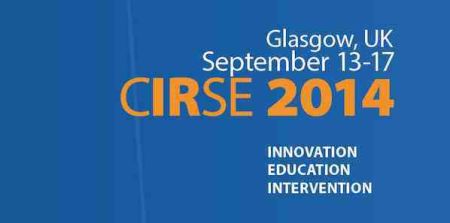Patient safety and quality assurance remains a key topic for the Cardiovascular and Interventional Radiology Society of Europe (CIRSE). A session at the congress in Glasgow today featured four speakers to emphasise that patient safety and quality assurance are mandatory, doable at European and institutional level.
“Quality assurance is everyone’s business - we should choose wisely and deliver safely”, said Liz Kenny, who is senior radiation oncologist at the Royal Brisbane and Women’s Hospital in Australia and a member of CIRSE’s oncology task force shared the Australian professional experience of developing quality assurance for radiation oncology. Kenny emphasised that QA is wide-ranging, covering procedures, activities, actions and groups of staff. She noted that without quality standards, quality can’t be assessed. Standards belong to the professions. not to governments, she added.
In her field of radiation oncology, radiotherapy can go seriously wrong, but it happens seldom.
In radiation treatment delivery QA processes line up against all steps - assessment of patient, decision to treat, prescribing treatment, positing and immobilisation, simulation, imaging, volume definition, planning, transfer of information, patient set up, treatment delivery, treatment verification and monitoring, and monitoring and recording of side effects and outcomes. In interventional oncology, these also apply.
Kenny stressed that not only incidents but near misses are critical report, as it’s the tiny things that add up that you learn most from.
She added that important lessons from the HeadSTART trial was the need for credentialling institutions wishing to enrol patients before the trial started.
She concluded by saying that radiation oncologists mostly think about the kit, and the delivery and treatment in relation to quality, but that’s only two out of 16 aspects of the Practice Standards for Radiation Oncology in Australia and New Zealand.
Kenny added that CIRSE is well placed to develop a QA framework - the principles are not country specific.
Next, John Wilkinson, Director of the UK’s Medicines and Healthcare Products Regulatory Agency explored whether regulatory agencies help or hinder. He emphasised how they help, and the need for collaboration between doctors, patients, regulatory agencies and manufacturers to ensure patient safety. This is no easy tasks in an age where the need for evidence and demand for innovation is going up, while the preparedness to accept risk and pay for innovation is going down. Aggregated data from reports to the MHRA is important, he stressed. It is about detecting patterns of behaviour, but that also does not mean that a single report cannot bring about prompt change.
CIRSE President Anna-Maria Belli outlined the many measures CIRSE has taken and is taking to improve patient safety, including the IR Patient Safety Checklist - the most downloaded paper from CVIR in 2013 was an article about implementing the checklist, she added.
As IR is complex, education is key. CIRSE has therefore developed an IR curriculum and the EBIR qualification. Simulation can be very useful, which is why the congress includes simulation sessions.
The last speaker in the session, Dr. T. De Baère from France, described how his institution implemented quality improvement guidelines in interventional oncology. They went far beyond quality assurance, and have implemented a continuous quality improvement programme. In interventional oncology, practitioners need to consider quality of tools and imaging technique at the crossing of different specialities (radiology, surgery, oncology), including indication, patient pathway, procedure, post-procedure and outcomes.
Latest Articles
CIRSE, CIRSE 2014 Glasgow, quality assurance, radiation oncology
Patient safety and quality assurance remains a key topic for the Cardiovascular and Interventional Radiology Society of Europe (CIRSE). A session at the co...



























